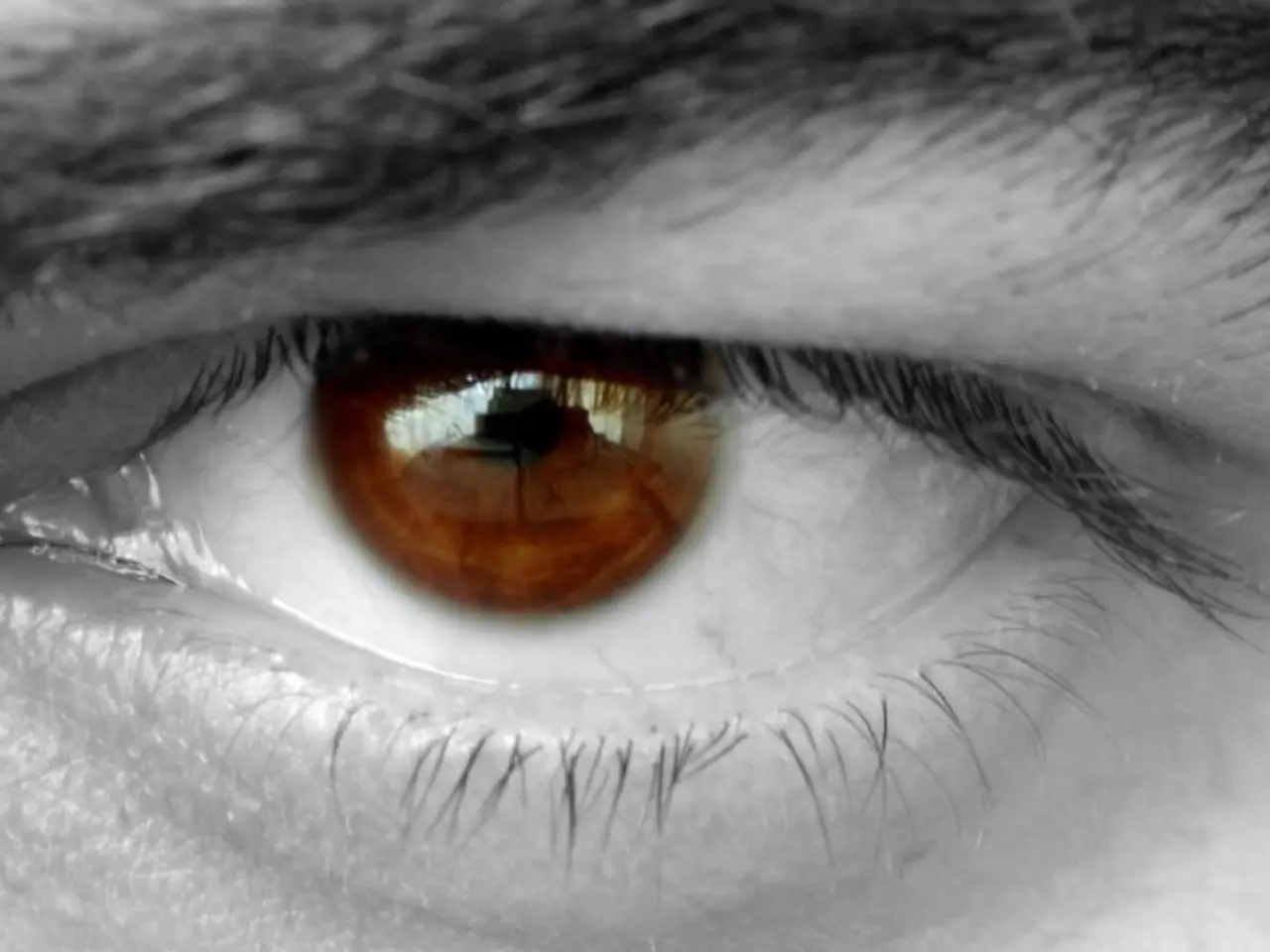Genetic Enigma: Decoding the Secret Behind Eye Color Transmission
In the fascinating world of genetics, the question of eye color has long been a topic of interest. A new understanding of the common alleles associated with eye color inheritance is shedding light on this intriguing subject.
The most notable genes involved in eye color determination are OCA2 and HERC2. These genes influence the amount of melanin in the eyes, which determines eye color.
- Brown eyes are caused by alleles that increase melanin concentration in the iris. Brown is generally dominant over other colors.
- Blue eyes result from alleles that reduce melanin production, leading to low pigment and allowing shorter wavelengths of light to scatter, giving a blue appearance. Blue is recessive to brown.
- Green eyes are caused by intermediate melanin levels combined with specific genetic variants (including variants on OCA2) and the presence of yellow pigments called lipochromes. Green is rarer and involves additional genetic complexity.
- Hazel eyes are not a simple trait from one or two alleles. Instead, they are polygenic and arise from multiple genes contributing to intermediate melanin levels and structural light scattering, resulting in multicolored irises.
Other genes like TYR and SLC45A2 also contribute to eye color variation, along with unknown modifier genes that affect the final eye color and patterning features such as pigment rings and furrows in the iris.
Understanding alleles, dominant and recessive traits, and genotypes is crucial for comprehending eye color inheritance patterns. For instance, two brown-eyed parents can have a blue-eyed child, although it's not very common. This is because eye color is polygenic, meaning multiple genes and their alleles interact, sometimes allowing recessive alleles to be inherited from previous generations.
The gene for eye color might have alleles for blue eyes and brown eyes. Mendel's work showed that dominant alleles show up even if a person has a little bit, while recessive alleles need a double dose to make their presence known. Each pair of genes is located on a chromosome, and each gene has two different versions called alleles.
Genotype is the genetic makeup that underlies phenotype. In this case, genotype refers to the specific combination of alleles that determine an individual's eye color, while phenotype is the outward expression of genes, such as eye color, height, or love of cheesy jokes.
As we age, the melanin pigment that gives our eyes color may diminish, leading to a lightening of the iris. This process, combined with the complexities of polygenic inheritance, enriches our world with a vibrant array of eye colors.
Genetics is the branch of science that studies how traits are passed down from parents to offspring. The study of eye color inheritance not only deepens our understanding of genetics but also highlights the fascinating diversity within our species.
[1] Genetics Home Reference. (2019). Eye color. https://ghr.nlm.nih.gov/condition/eye-color [2] National Geographic Society. (2018). The science of eye color. https://www.nationalgeographic.com/science/2018/03/the-science-of-eye-color/ [3] Nature Education. (2012). How do genes affect eye color? https://www.nature.com/scitable/topicpage/how-do-genes-affect-eye-color-14365691/ [4] University of Utah Genetic Science Learning Center. (2018). Eye color. https://learn.genetics.utah.edu/content/traits/eye/ [5] The Human Genome Project. (2001). Understanding Genetics: How genes affect eye color. https://www.genome.gov/10001815/
- Mental health, like eye health, is influenced by a complex interplay of genes and can be impacted by a variety of genetic variants.
- Just as understanding the gene for eye color requires knowledge of dominant and recessive alleles, understanding the genetics of mental health requires understanding the role of different genes and their variations.
- A balanced diet rich in nutrients, regular exercise, and a stress-managed lifestyle are all important for maintaining overall health and wellness, including eye health, mental health, and fitness and exercise levels.




